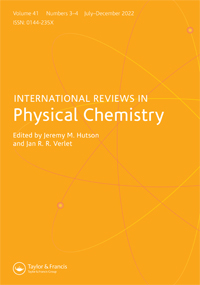Exploiting NMR spectroscopy for the study of disorder in solids
IF 2.5
2区 化学
Q3 CHEMISTRY, PHYSICAL
引用次数: 49
Abstract
Abstract Although the solid state is typically characterised by inherent periodicity, many interesting physical and chemical properties of solids arise from a variation in this, i.e. changes in the nature of the atom occupying a particular site in a crystal structure or variation in the position of an atom (or group of atoms) in different parts of a structure, or variation as a function of time. This lack of long-range order poses significant challenges, not just for the characterisation of the structure of disordered materials, but also simply for its description. The sensitivity of nuclear magnetic resonance (NMR) spectroscopy to the local, atomic-scale environment, without the requirement for long-range order, makes it a powerful tool for the study of disorder in the solid state. Information on the number and type(s) of coordinating atoms or through-space and through-bond connectivity between atomic species enables the construction of a detailed picture of the structure. After a brief description of the background theory of NMR spectroscopy, and the experimental methods employed, we will describe the effects of disorder on NMR spectra and the use of calculations to help interpret experimental measurements. We will then review a range of applications to different types of disordered materials, including oxides and ceramics, minerals, porous materials, biomaterials, energy materials, pharmaceuticals, polymers and glasses. We will discuss the most successful approaches for studying different materials, and illustrate the type of information available and the structural insight gained.利用核磁共振光谱法研究固体中的无序性
虽然固体的典型特征是固有的周期性,但固体的许多有趣的物理和化学性质都是由这种变化引起的,即原子在晶体结构中占据特定位置的性质的变化,或原子(或原子群)在结构的不同部分的位置的变化,或作为时间函数的变化。这种长程有序的缺乏不仅对无序材料的结构特征提出了重大挑战,而且对其描述也提出了重大挑战。核磁共振(NMR)光谱对局部原子尺度环境的敏感性,而不需要远距离有序,使其成为研究固体无序的有力工具。关于配位原子的数量和类型的信息,或原子种类之间的通过空间和通过键的连通性,使构建结构的详细图像成为可能。在简要介绍核磁共振光谱的背景理论和实验方法之后,我们将描述无序对核磁共振光谱的影响,以及使用计算来帮助解释实验测量结果。然后,我们将回顾一系列不同类型的无序材料的应用,包括氧化物和陶瓷,矿物,多孔材料,生物材料,能源材料,药品,聚合物和玻璃。我们将讨论研究不同材料的最成功的方法,并说明可用信息的类型和获得的结构洞察力。
本文章由计算机程序翻译,如有差异,请以英文原文为准。
求助全文
约1分钟内获得全文
求助全文
来源期刊
CiteScore
14.20
自引率
1.60%
发文量
5
审稿时长
1 months
期刊介绍:
International Reviews in Physical Chemistry publishes review articles describing frontier research areas in physical chemistry. Internationally renowned scientists describe their own research in the wider context of the field. The articles are of interest not only to specialists but also to those wishing to read general and authoritative accounts of recent developments in physical chemistry, chemical physics and theoretical chemistry. The journal appeals to research workers, lecturers and research students alike.

 求助内容:
求助内容: 应助结果提醒方式:
应助结果提醒方式:


